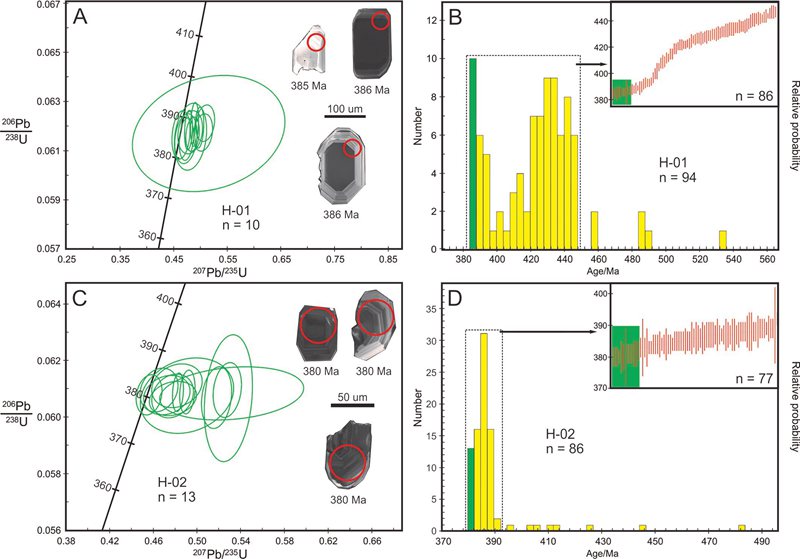
U-Pb concordia diagrams, cathodoluminescent (CL) images of zircons and frequency histograms of detrital age populations from samples.
Major advances in land plant evolution and diversification occurred in the Middle to Late Devonian. The fossil records contain tree-sized plants that comprised early forests of the Middle-Late Devonian at different continents. The appearance and the development of forest ecosystem imparted dramatic changes on the Earth system and furthermore caused a rapid decline of atmospheric carbon dioxide during the Devonian. However, isotopic dating for the Middle to Late Devonian floras was never carried out.
Recently, Prof. XU Honghe from Nanjing Institute of Geology and Palaeontoloty, Chinese Academy of Sciences cooperates with the University of Hong Kong, having made a geochronological research for Middle Devonian Hujiersite Flora. The flora is preserved in the Hujiersite Formation, which is best represented at the 251 Hill section, which is composed of a normal fault, containing abundant mega-plant fossils and spores. In this study, the geological background of the 251 Hill section is investigated and two tuffaceous sandstone samples were collected from the normal fault near the plant fossil bearing beds. U-Pb ICP-MS analysis of detrital zircons from these samples gave a maximum depositional age of 385 Ma (late Givetian stage) for the hanging wall and 380 Ma (early Frasnian stage) for the footwall of the section. This study thus reports a novel Givetian–early Frasnian age constraint for Hujiersite Flora.
Based on conchostrachans and plant fossils, previous studies suggested a late Middle Devonian age for the Hujierste Formation. However, some disagreements exist and radio-isotopic age determination for this fossil-bearing section is absent. The Hujiersite flora resembles the Givetian to Frasnian Campo Chico Flora of Venezuela. The geochronologic constraint is consistent with previous age interpretations from biostratigraphic correlations.
Download:
